Lines, Drawings, the Human Condition
– Tim Ingold, Momoyo Kaijima, Andreas Kalpakci and Anh-linh Ngo
This conversation between Tim Ingold, Momoyo Kaijima, Andreas Kalpakci and Anh-linh Ngo was first published, in German translation, in issue 238 of ARCH+ (March 2020). Drawing Matter would like to thank the editors of ARCH+ for allowing us to publish the original English version of the text.
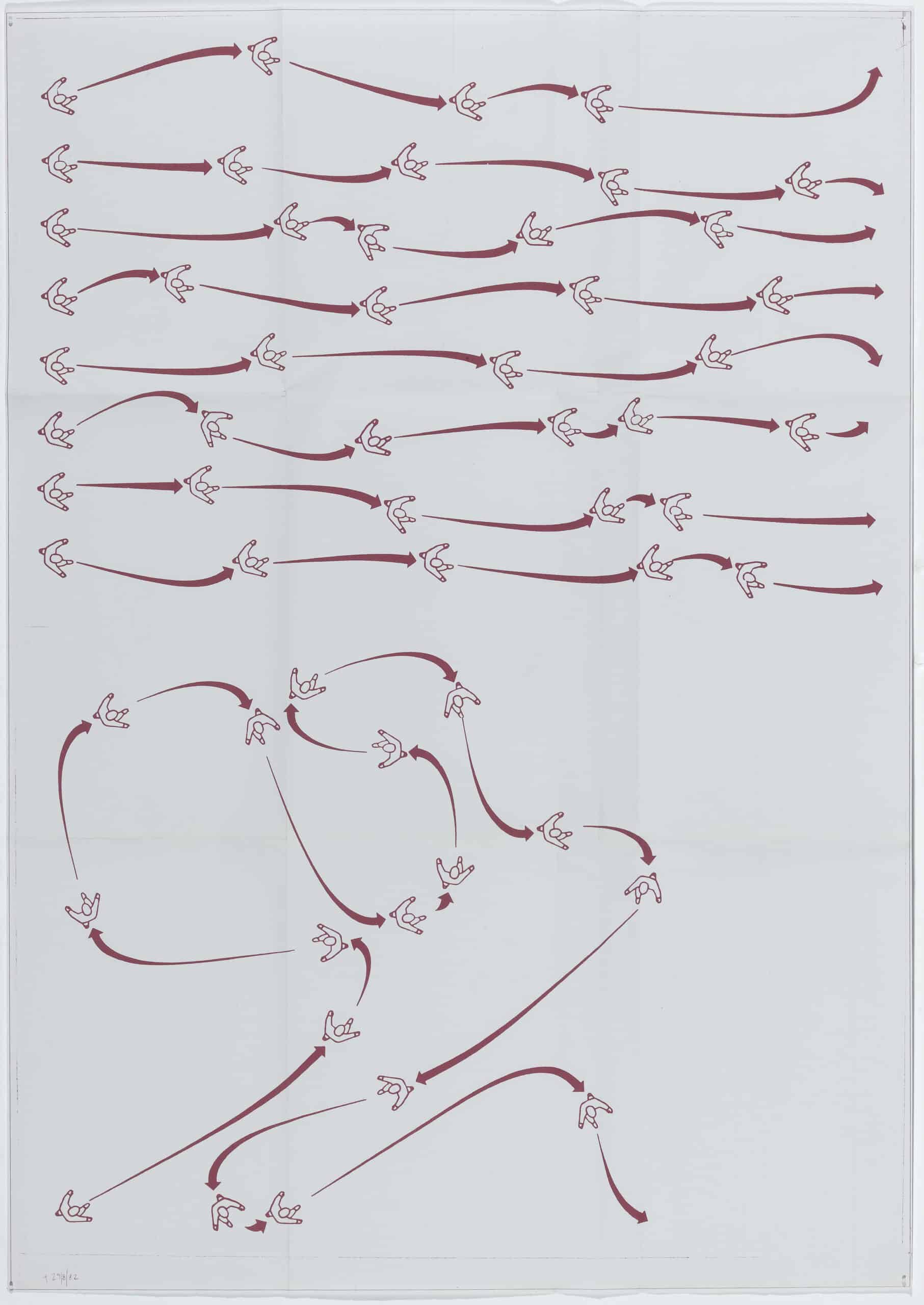
Momoyo Kaijima: With this ARCH+ issue, entitled Architectural Ethnography, we are trying to understand what kind of drawing methods, techniques, and practices are developing around us when observing the world. Your main interest is not primarily in drawing, but in the line itself, which can also be a script, a text…
Tim Ingold: It’s all lines.
MK: Yes, they are all lines. Thinking about lines allows us to expand our idea of using drawings as tools of observation. You refer to this as ‘anthropography’. Sometimes you also use the word ‘linealogy’. How did you arrive at these terms?
TI: I am by training and temperament an anthropologist, but many anthropologists call themselves ethnographers. I have had long debates with my colleagues about whether anthropology and ethnography are the same thing or not. I have been arguing that they are quite different, in so far as ethnography is fundamentally a descriptive endeavor. You take the world as you find it and you try to render it in great depth. For that, drawing can be a wonderful tool. We should be teaching ethnographers to draw because drawing is a fundamental method of observation. The beauty of it is that it links observation and inscription. Anthropology, on the other hand, asks questions about the conditions and possibilities of human life. That’s the reason why I think anthropology and ethnography should be distinguished. Because if you’re doing ethnography, descriptive accuracy is very important. You have to be faithful to what you’re describing, but that makes it very difficult to be experimental, or to be speculative.
The word ‘anthropography’ was actually coined by the poet Samuel Taylor Coleridge in the late eighteenth-century to refer to a description of the different ways of mankind. [1] But I didn’t know that when I first came up with the word! I thought of ‘anthropography’ as a way of pursuing a speculative inquiry through a method that leaves traces of one sort or another. I have also used the word ‘linealogy’ – albeit not really seriously: if one is going to study lines, well, that’s what you would call it. Thinking about lines is linked to a process perspective, to the idea of a world in becoming, because the line is something that doesn’t just trace out how things have been, but also points to possible ways in which things will go. There is something inherently speculative and experimental about tracing lines. That’s what I wanted to bring out with both words, ‘linealogy’ and ‘anthropography’: I wanted to describe a sense of a movement that is not closed, but open-ended, moving, and becoming.
Andreas Kalpakci: How does this difference between anthropology and ethnography relate to drawing? Because on the one hand you say that anthropology has a speculative dimension, but on the other hand, as anthropology relies on ethnography, there is also a documentary dimension.
TI: It comes down to the way in which we understand the relationship between the part and the whole, or the individual and society. We have had a bit of a paradigm shift in anthropology in the sense that we have moved from a rather structural way of thinking – which is to say, here’s a social structure and there are people inside the structure who have to find their place within it – to recognising that people are endowed with an agency of their own and that whatever structures there are, they emerge out of personal movements and relationships. Persons and relations, in the latter approach, are not framed in the way they are in the former.
Clifford Geertz famously used the expression ‘thick description’ to capture the idea that what you should do in ethnography is to layer things on with such a thick and dense weave that the nuances of local variation and idiosyncrasy are all woven into a rich tapestry. One could compare it to traditional oil paintings of the Dutch masters of the seventeenth and eighteenth centuries. They would do just that. They did not draw, they painted with oils and they had a sense in which every little thing that they would put in with a brush had a significance within the whole picture. In this respect, ‘thick description’ is a kind of verbal twentieth-century equivalent of seventeenth and eighteenth-century Dutch oil painting. There are things you can do with oils, which you can’t do with a pencil. When you draw one line over another, the second intersects the first without however wiping it out. It is still visible. But with oil painting, one layer of paint can completely obliterate another: it would require a technique of X-ray analysis to bring it back into view. Likewise, with painting you can cover an entire surface, while with drawing you cannot, and there is always room to insert more lines.
Thus, if the aim of ethnography is to create an overarching and complete representation, in which to every little detail is assigned its place and its meaning in the context of the whole, leaving no gaps to be filled, then it can be better done with a paintbrush than with a pencil. But if the aim is rather to follow people as they move around, come together and go their different ways, in a life that is not pre-structured by the whole but continually generative of new patterns, then pick up a pencil! [2]
MK: Yet even in the drawing of lines, there seem to be differences. Modern architecture is based on lines that are often related to construction systems or to the repetition of industrial components, thus forming grids. The movement of people to which you refer, however, is instead very different – its lines are more fluid and continuous.
TI: Absolutely, there are different kinds of lines. And for that reason, people often use the word ‘line’, in one sense, for something that in another sense wouldn’t be a line at all. The most obvious example is the dotted line. If you think of a line as a succession of points, then the row of dots counts as a line, but if you think of it as the trace of a continuous movement, then it doesn’t. It is just dots. So, here I think we need to distinguish between the sort of line that is growing and moving, that doesn’t have a terminal point, and the sort of line that is straightforwardly geometrical and that connects points. Architectural drawing is quite interesting, because when architects are drawing as they think, these lines are very open-ended, they are sketch-like. But at some point, the sketch has to give way to a specification drawing that you would give to a construction company, and that even has legal force. These two kinds of line are quite different, giving rise to the problem of how you translate from one to the other.
One of the sorts of lines I’ve got interested in are stretched taut lines. The first geometers were earth measurers in ancient Egypt. [3] They used to measure out the land every year after the Nile had flooded, in order to demarcate agricultural plots. They would carry a rope and wooden stakes, hammer the stakes in the ground here and there and stretch the rope between them. That would measure the field boundaries. The rope was tight. It was a straight line between points. And yet this rope was a physical thing. It had tension. If you plucked it, it would vibrate, and maybe even make a noise. The stretched rope is like a hinge between a very abstract optical projection of the world and a very concrete, very tangible, very haptic construction. This hinge becomes even more evident when one thinks of the chalk line. Invented in ancient Egypt, the chalk line is an instrument still used by builders today. It consists of a long line of string covered with chalk. Builders stretch it out from one point to another across a surface to be marked up, for example for cutting, and then with one ‘snap’ of the string, a straight line is deposited on the surface. It is fascinating because this isn’t like tracing a line across a piece of paper: you immediately have the whole length and it’s produced by something that has physical body, that vibrates.
AK: This distinction between the straight line of the Egyptian geometers and what you referred to as ‘abstract open-ended lines’ is very sharp in your work. If you look at the line of the architect and the line of the anthropologist, what would you say is the difference there?
TI: I am not sure what the line of the anthropologist is, because most anthropologists are not interested in lines. Personally, in my study of lines, I was much influenced by my reading of John Ruskin. Ruskin talked about a line as the way things are going. Imagine you want to sketch a mountain.
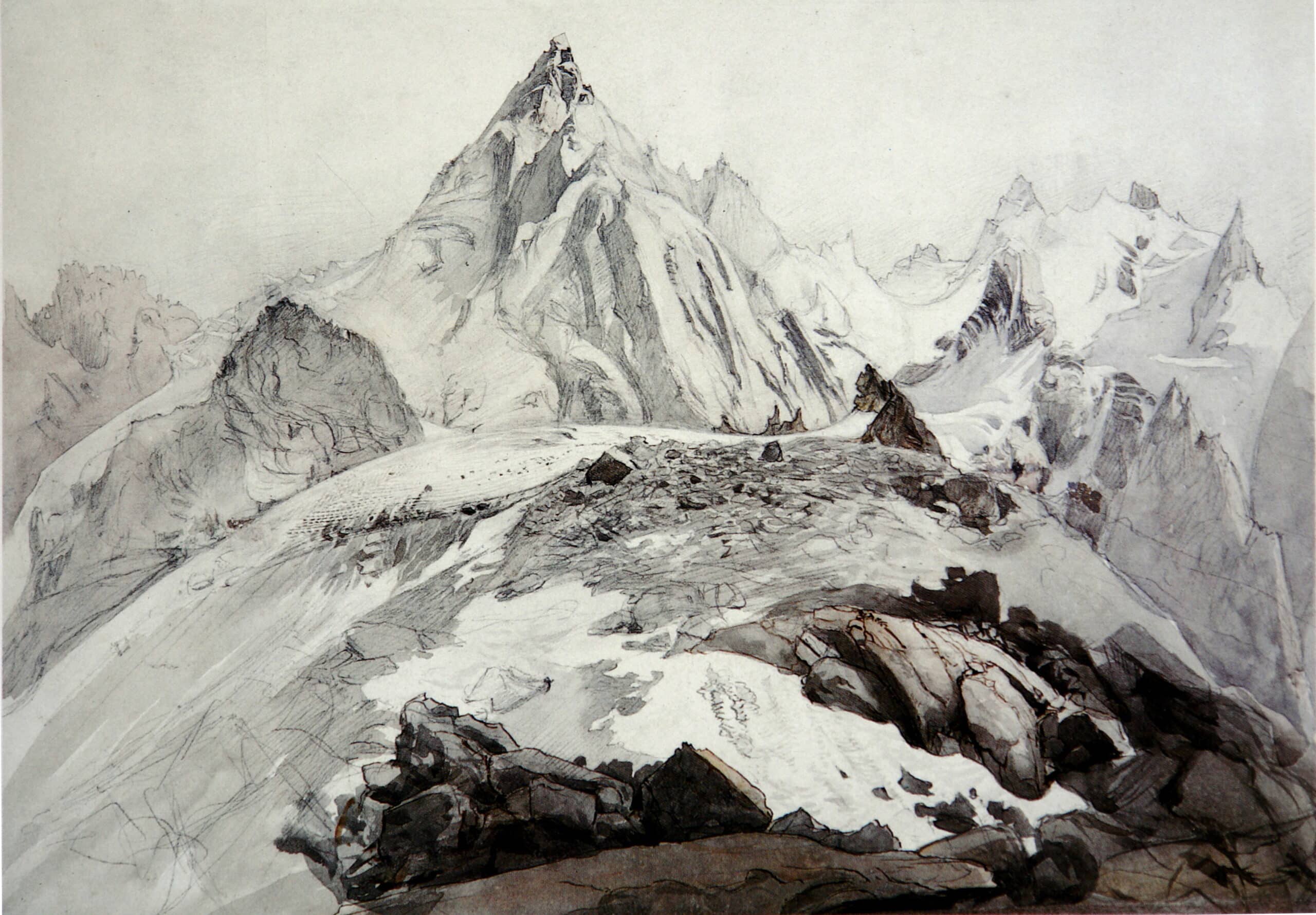
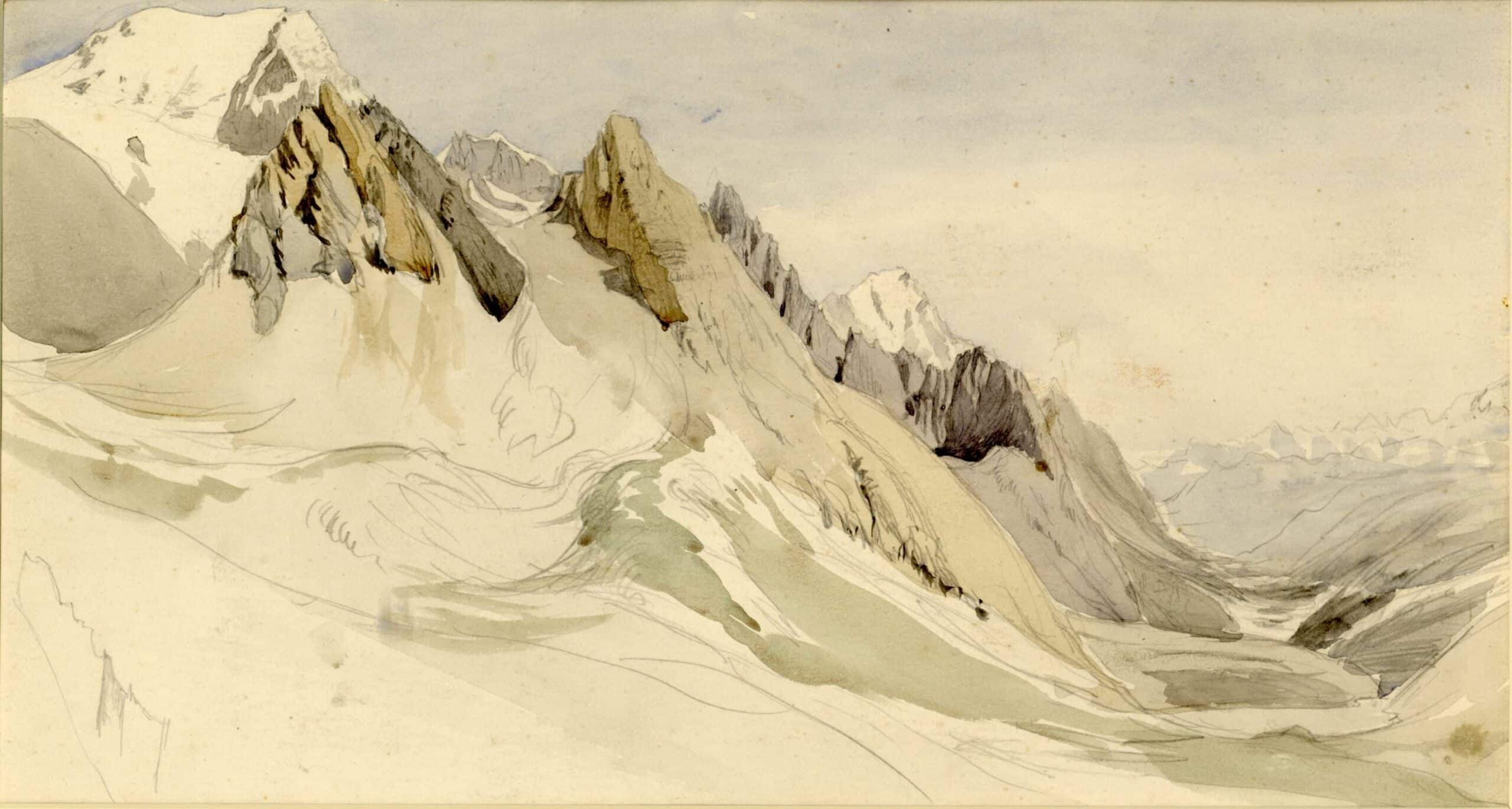
For him, this is not just a matter of recording its outline or profile. It is about giving a sense of how the mountain is developing, of the way it is actually rising from the ground.
Another piece that influenced me very much was a beautiful little essay called Line and Fish by Wassily Kandinsky. [4] A fish is a living organism. It lives in the water. We can catch it, we can cook it, we can eat it for dinner, but Kandinsky says that a fish could be a line too, in that if you see the fish streaking through the water you see it as the linear streak. What Kandinsky is trying to do here is to get beneath the surface appearance of things, to find the inner dynamic that underpins them. You could depict the fish as an object; you could outline its profile. But if you wanted to get to the dynamic of the fish, to its life, then you should draw a line! [5] You should peel away all the figurative elements and get to the dynamic beneath. When I think about lines anthropologically, it’s that basic dynamic I am trying to get at.
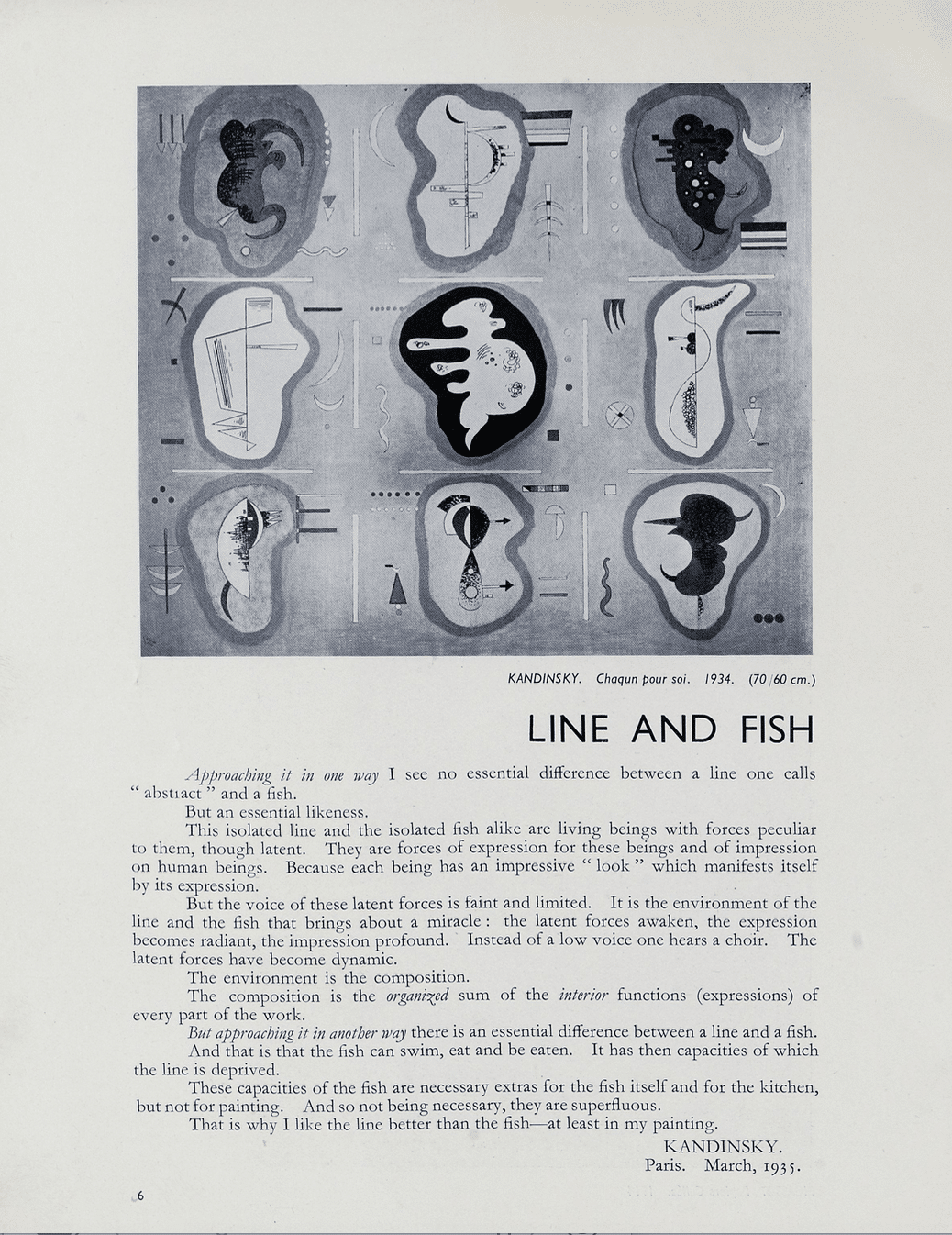
Wassily Kandinsky, ‘Line and Fish’, single-sided essay in Axis, A Quarterly Review of Contemporary Abstract Painting and Sculpture, issue 2, London 1935
In my understanding, as an anthropologist, modern architects have been primarily concerned with form. The form was the primary thing, then you would imagine a structure, and then you’d think of the kinds of movements that go in and around it. How different would architecture be if one took movement as the primary element instead of form? Ray Lucas, for example, my great colleague and former student, tried to explore this. He carried out experiments in Tokyo where he walked down the subway in an enormous station in the direction opposite to that in which the crowds were moving. He then translated this movement into a dance notation, then into an architectural notation of his own, and finally he came up with architectural structures that were derived from the movement rather than the other way around. This is architecture, he explained, from the point of view of the people moving in and out of a subway station. That’s what it means to give architecture a genuinely anthropological perspective. It is about how architectural forms are generated in and through the everyday movements of people.
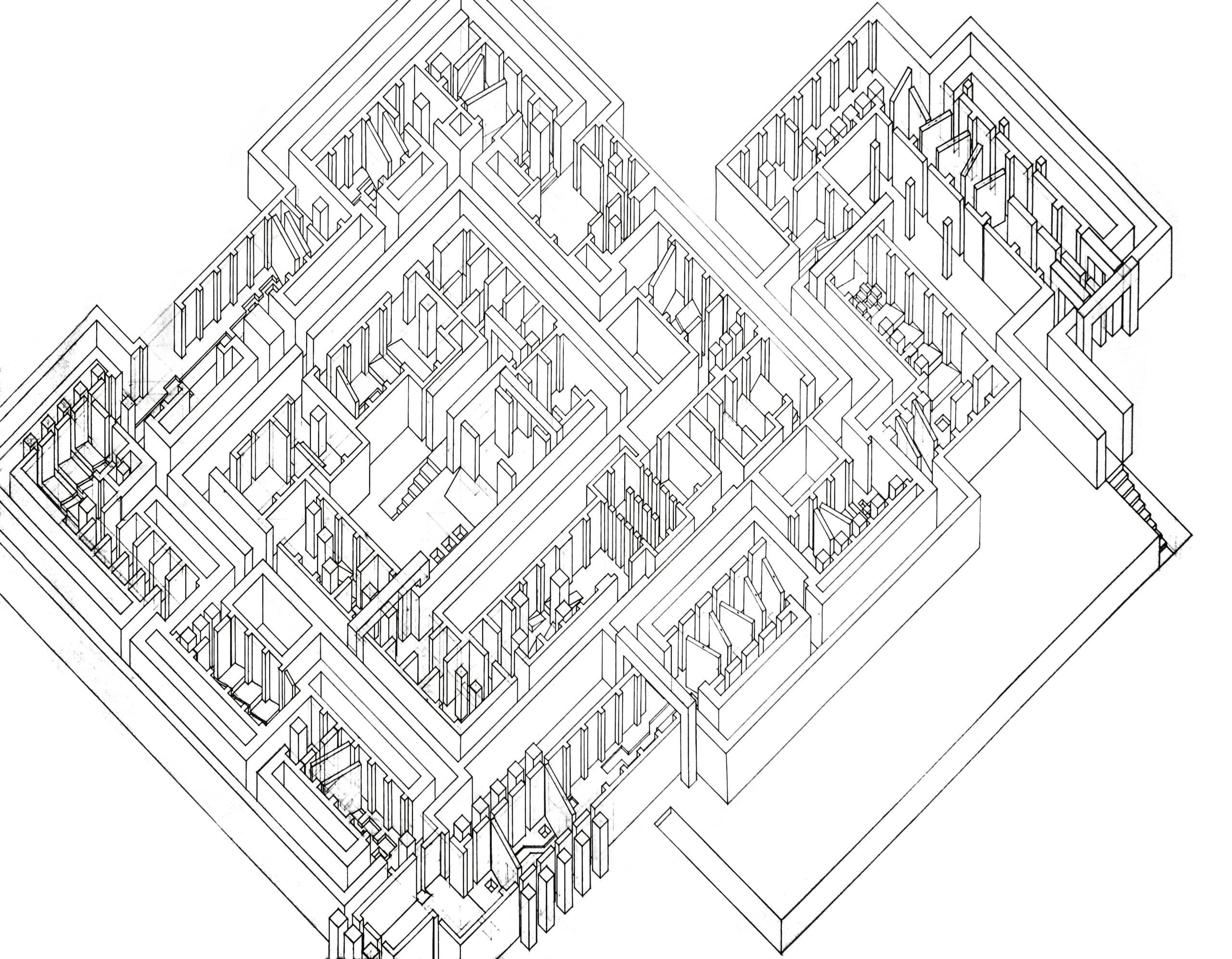

MK: If we could just follow the meaning of lines, their dynamics, forces and movements, we could focus more precisely on the users. But most of the time, architects have to deal with such things as ‘a brick is this size, a panel is this size’, and so our task is merely to coordinate. Instead, I wish we were able to integrate different, more human topics into the design process. Ray Lucas, for example, is also interested in traditional festivals, instruments, people, clothes, cosmetics, dancing, rather than just space occupancy. His drawings are about one total spatial condition. I think architecture should look for methods like this. It should include more aspects of life.
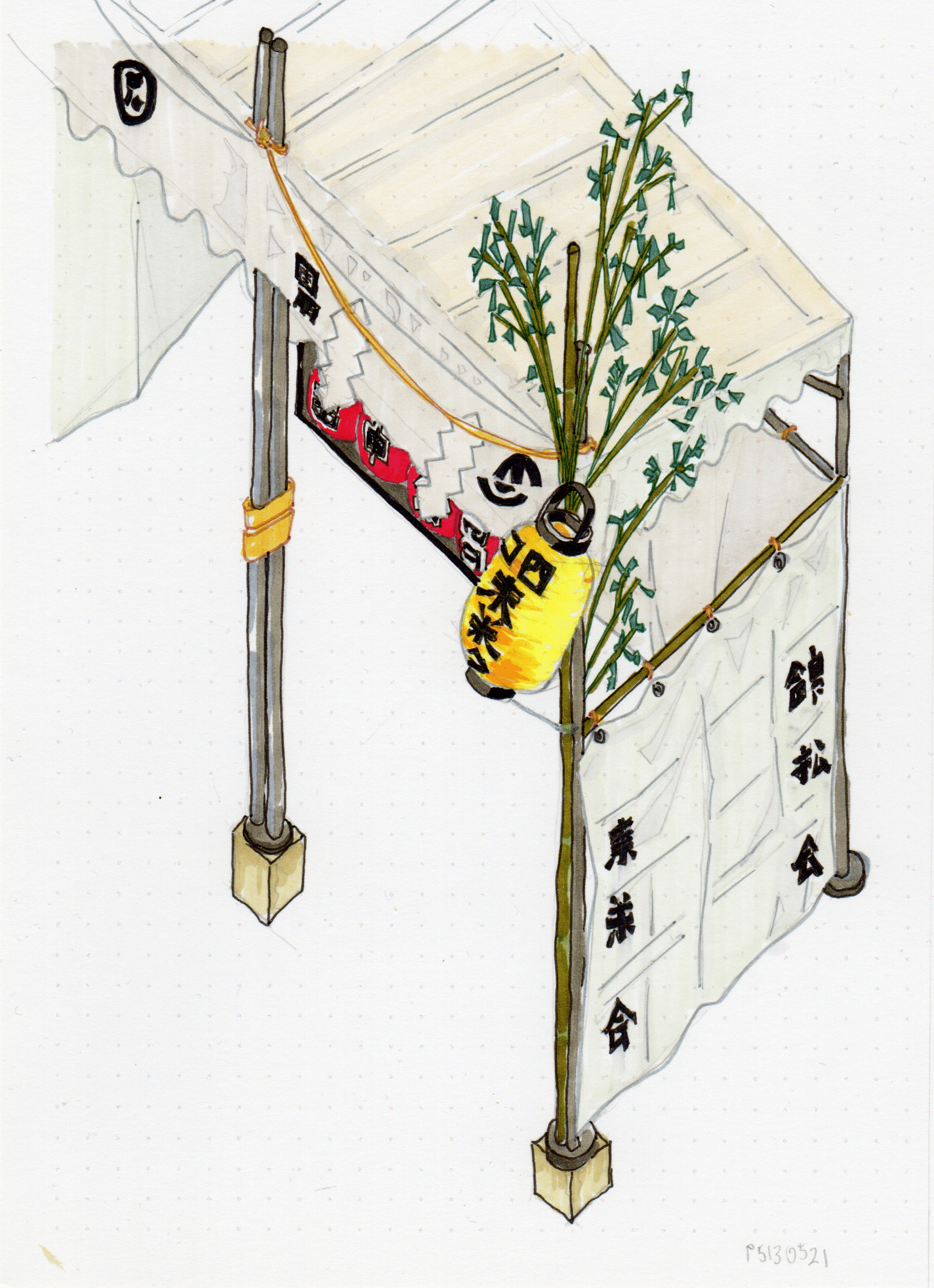

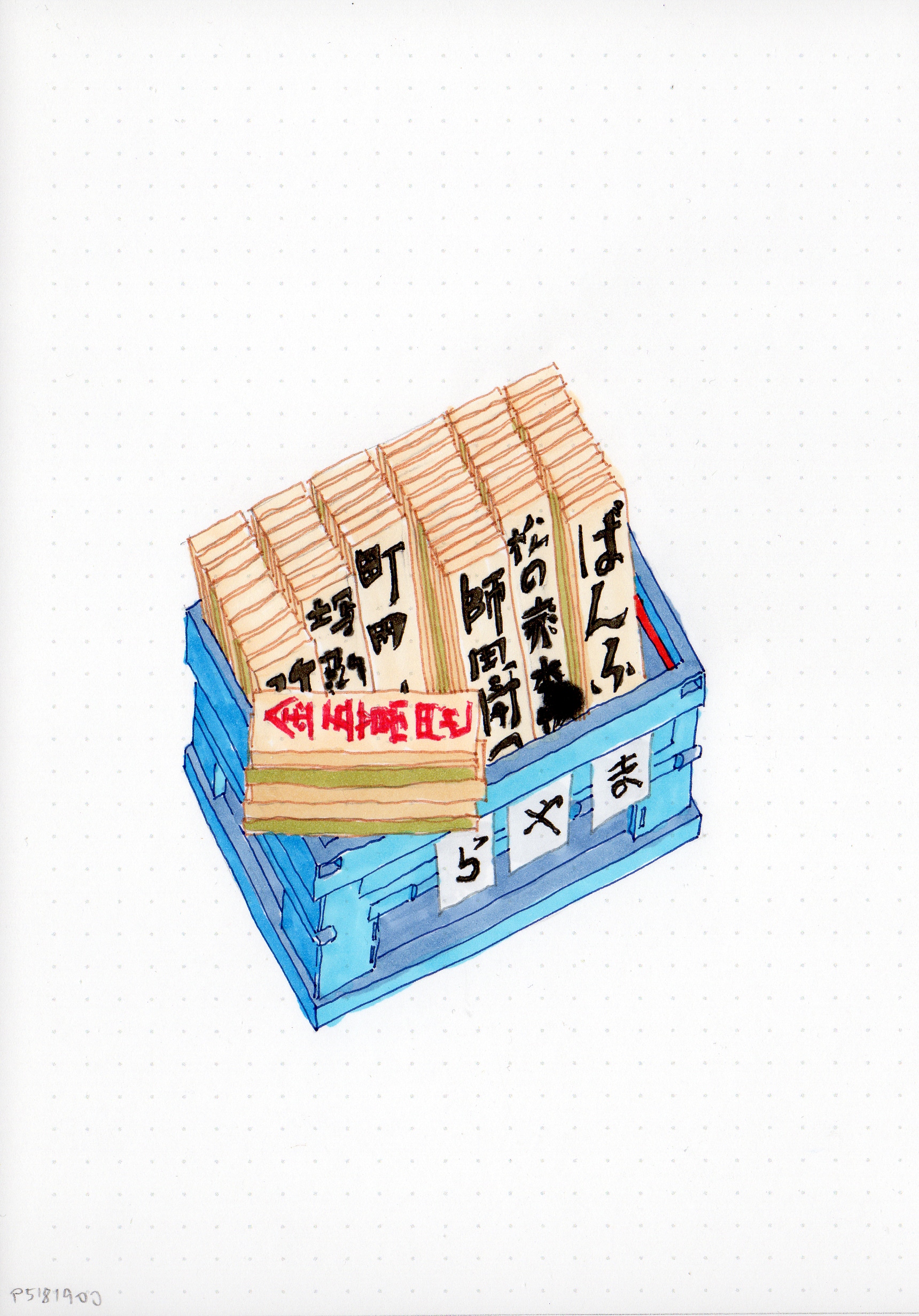
TI: I think this problem is present in all design disciplines: designers are saying, ‘we don’t really like this idea of laying down a plan that people have to conform to. We want to allow people to be generative and have a lot of movement in a space, and we want to accept whatever emerges out of this collective dynamic.’ But then what do the designers do? Do they set down some basic parameters within which there is a lot of flexibility? Or do they give people some instructions and say: ‘now off you go and do this!’ It’s not clear what the real solution should be.
AK: I think this is a very good point, which brings us to the distinction between a plan and a drawing. If we were to look at a drawing as composed by lines, what would be the peculiar quality of such a drawing that plans do not have?
TI: First, when you’re drawing, the pencil is responding to what is going on just around it. When you’re doing a drawing, at any moment the pencil is at one particular point on the paper and you’re thinking: ‘where am I going to go next?’, whereas the planner, ideally, is looking from above and with each move he makes, he has the whole plan in view. A drawing is fundamentally improvisatory, in the sense that one is continually finding a way forward in response to what is going on around. The plan is more calculative, more strategic. If you were to make an analogy with a game, the plan is more like playing chess and drawing is more like playing football.
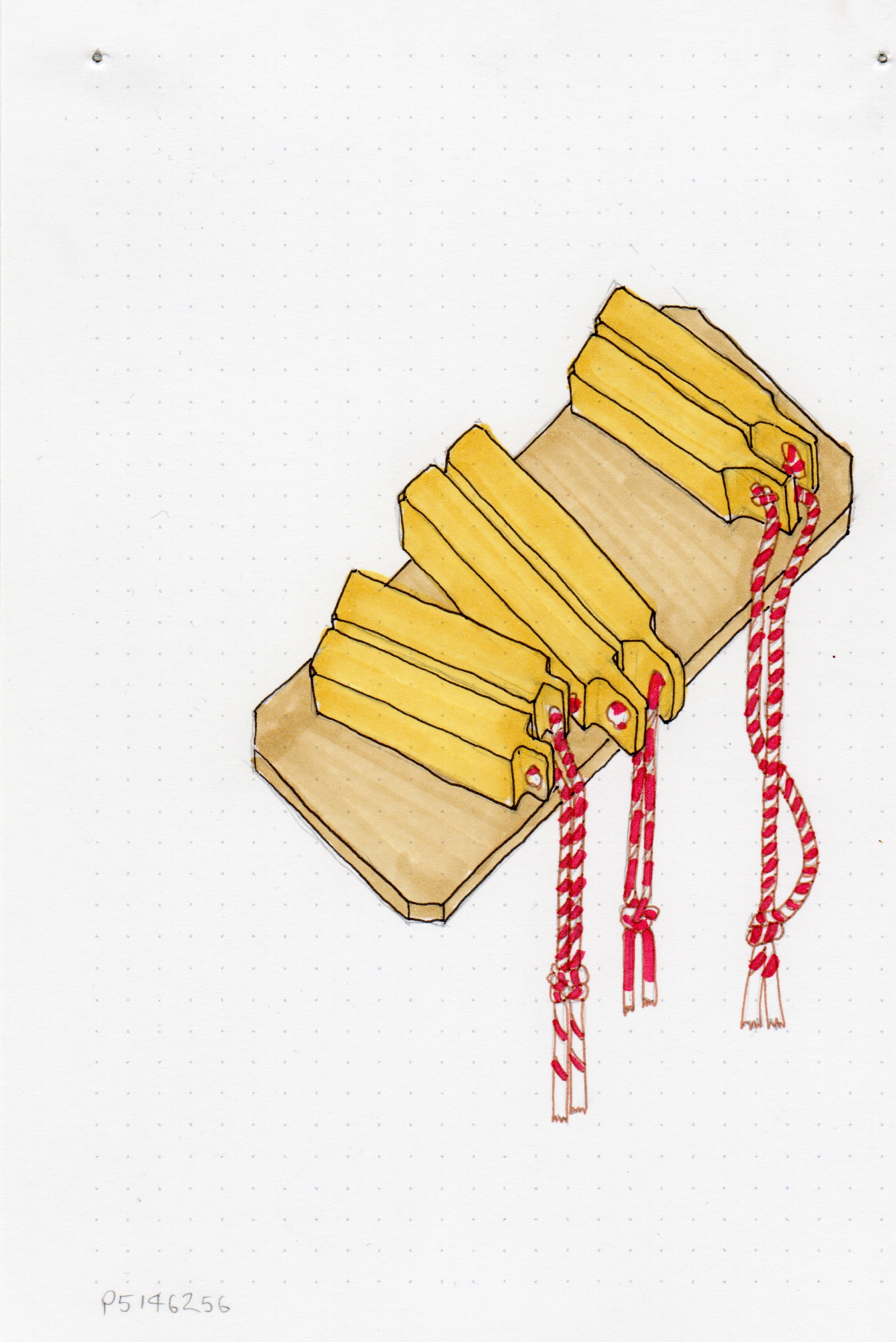
AK: In the Department of Anthropology at the University of Aberdeen you taught a course called the 4 A’s (Anthropology, Archeology, Art, and Architecture). This course aimed at blurring the classic disciplinary boundaries between more inductive subjects like art and architecture and more academic ones, like anthropology and archaeology, for example by assigning students very practical tasks that required fieldwork observation as well as creative use of drawing and notation techniques. What exactly did your students observe?
TI: Each student had to choose a site: it could be a park bench, a roundabout, a prehistoric stone circle, a tree… all sorts of things. First of all, they had to collect some found objects from around the site and bring them back to class. In this way, they had to learn to think about a site in terms of the bits and pieces that arrived on it, and how and why they got there. Then they had to recover some materials from the site, leading them to ask: what difference does it make if we think of a thing as an object or as material substance? This also introduced students to the idea of a site as a place of narratives. Then they had to observe the place in different weather conditions and at different times of the day. Finally, we asked them to focus on movements, first of nonhuman animals – Aberdeen for example is full of seagulls – and then of people. They had to draw their site, photograph it, and make a model of it.
MK: And how did students translate movements into drawing?
TI: It was a challenge for them, how to do this. The temptation for students was always to draw movements as on a map. Take the example of somebody crossing the road. They would draw a view from above, with the cars going down the road and the pedestrian crossing, and they would say: ‘here comes a pedestrian. He stops here, then he crosses over, and then he arrives there.’ That however doesn’t give us much sense of the movements that the pedestrian actually makes. I mean, where is the movement of pressing the button? Where is the movement of waiting for the green light? This was the default position for most students: they assumed that getting the movement on to paper meant drawing a plan, until they realised how little information actually got onto it, and so they had to think of other ways to manage it. The problem is that we are brought up in a map-saturated culture. We are so accustomed to the conventions of map-reading that we almost forget what it is to think about movement from a body-centered perspective. You almost have to train people back into it, even though it’s an intuitive thing.
AK: And how did the 4 A’s course tackle the difference between drawing lines and notation?
TI: That was always the bit that I never properly worked out. The basic principle is that notation is anything that can help transfer movement from one medium into another: for example, from something written on paper to a musical or a dance performance. The justification for looking at notation was that maybe anthropology or ethnography, whatever you want to call it, could be enriched by drawing on alternative notations to writing, or by combining different notations. So far, anthropology has done very little along these lines, whereas in architecture this is happening all the time: you look at any architectural sketchbook and there’s a mixture of drawing, writing, numbers, all sorts of things. In anthropology, we didn’t get much further than saying, ‘look, here are great possibilities.’ We looked at the issues that people faced in trying to notate music, or dance, or architecture, but then we don’t really apply them in our field.
One of the most interesting issues that arose when talking about music and dance in class, for example, was the difference between what you might call digital and analog notations. In dance, for example, the Laban notation is very digital. It breaks movements down into a lot of components. It has a frame in which movements are located, and the dancer has to read them off from the frame. Other kinds of dance notation are more fluid, and basically reenact on paper the movement that the dancer would make with the body. Similarly, classic musical notation is very digital. It has these things called notes, but I am a cellist and I know that when I play the cello, there are no notes. There are phrases and movements, but no individual notes. One learns how to translate from one to the other, so when you are faced with a score you can play it, but the instrument and the score are not the same thing.
Anh-Linh Ngo: Something which has kept me preoccupied during our conversations in preparation for this ARCH+ issue, is how architects use drawings as a representational tool, rather than as an operational one. You talked about the plan and its legal status earlier. That is one very straightforward way of being ‘operational’ of course, but what I am thinking about now is the speculative character of the discipline.
TI: Maybe it comes down to a question of how we understand the diagram. As Gilles Deleuze has taught us, a diagram is without substance and form; it is given abstractly as a set of functions, quite apart from the expressions and contents it will subsequently conjugate and distribute. [6] A diagram, thus, is not a representation. But it does convey a sense of functional interdependencies that, in a conventional representational depiction, could be obscured. To take a very simple example, suppose you have a drawing that is manifestly representational, that is simply there to picture something. Then, you draw an arrow on it – maybe to point to something, or to show some movement – and immediately the whole character of that drawing changes. By having that arrow put on there, the drawing turns into a diagram. It turns from being representational to being ostensive. Maybe that would be what it all comes down to, whether the drawing is pointing to something or not. Then there is the contextualization of course, and to what extent, in order to read a diagram, it has to be placed in a particular position in the world.
MK: In our research, we often encountered the claim that ethnographic drawing should be objective and ‘scientific.’ But what does ‘scientific’ mean? Some people think of it as something ‘exact’, based on empirical data. But thinking about your teaching, I am of the opinion that students should cultivate more their subjective sensibilities in order to produce better observations, because if we lose these sensibilities, even if we gain in scientific analysis, there is a loss of quality.
ALN: On this note, I would also like to raise one question relating to the role of anthropology in a society that is obsessed with data collection. Shannon Mattern discusses this problem by describing a smart city project with the name HUMAN. That’s an acronym for Human Understanding through Measurement and Analysis. On their website, one reads the assertion that ‘for the first time ever, we are now able to quantify the human condition using rigorous science and big data approaches.’ [7] In a promotional video, they boast of having ‘brought together technologists, lawyers’, and ‘even anthropologists’. What role do anthropologists play in a big data society?
TI: I find these developments utterly terrifying. As in any academic discipline, in anthropology too, there are rogue elements that allow themselves to be co-opted into a deeply compromising agenda.
ALN: It seems to me that the speculative character of anthropology that you have described has been replaced by preemptive and predictive thinking, which is one way of seeing the algorithms and the artificial machine learning we are facing today. Speculation has been replaced with a techno-utopian vision. How do we deal with it from the standpoint of anthropology?
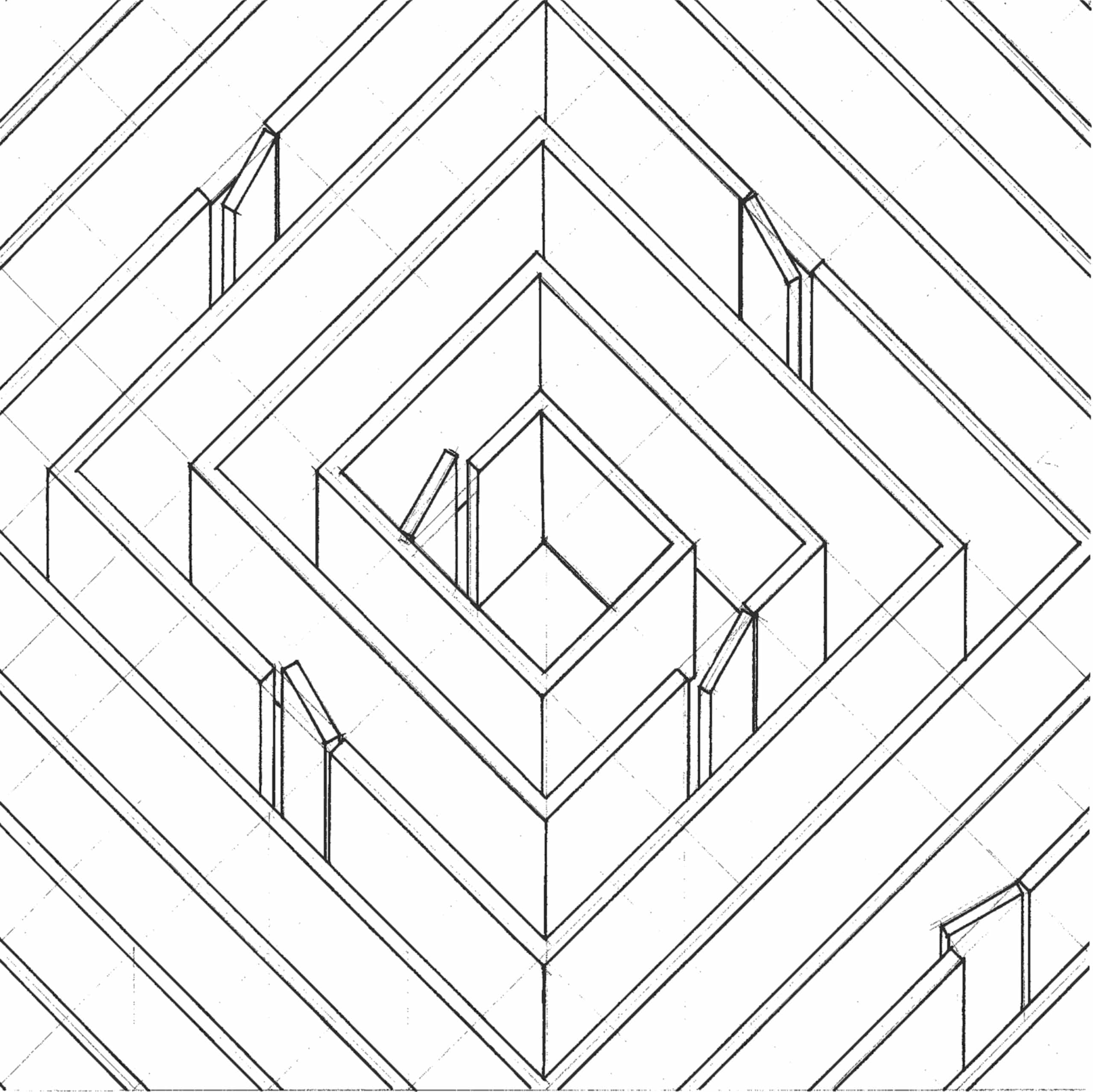
TI: It is a matter of how we imagine the future. There is a distinction between anticipation and prediction. Prediction is modeling. This is what scientists do, when they build a model of what the world will be like, say, in 50 years. Anticipation is looking at the way things are going. It is closer to what happens when you are crossing the road and there is heavy traffic, and you are trying to decide when it is safe to cross: you are actually anticipating the movements of the cars that are going in different directions. One is taking a projection from now into the future, the other is immersed in the current of movement and paying attention to the way things are going: it is more about attentiveness and responsiveness than it is about modeling, prediction, and control.
ALN: Connecting two points would be a prediction, and anticipation would be a line that flows.
TI: That’s exactly what I mean! What I am trying to say, in simpler terms, is that I would want anthropology to follow the line rather than join the dots. What architects could then learn from anthropology and ethnography is fairly obvious: it is what is called the ‘human dimension’. It comes down to the sheer extent of differences in the ways in which people relate to their environment. For any way that we think people do things, anthropologists can always find some people who do things differently. Architecture can probably gain quite a lot from looking at anthropological work on bodily practices in mundane activities like sleeping, cooking, eating, going to the shops.
MK: For all of these reasons the word ethnography is still problematic. Although the ‘ethno-’ in ethnography means ‘people’, it carries with it quite a narrow understanding. Likewise, architecture can sometimes be very narrow and rigid, but what we are interested in, is how it makes spaces for people.
TI: We have inherited this word – ‘ethnography’ – as a sort of historical sediment. We should not interpret it too literally, as ‘a description of the people’. But I still dislike the term precisely because of its ‘ethno-’ component. In a time of populist nationalism and ethnic conflict, it lays us wide open to misunderstanding of what we do. This is the real reason why I think it is so critical that we change it. For many people, the word ‘anthropology’ sounds very theoretical and even colonial. It has problems too. But there’s a long history of separating out the academic ‘-ology’ disciplines – the study of this or that – from those that have more to do with creating a world than studying it. Traditionally art and architecture are understood to be speculative, to be proposing things that do not yet exist. By contrast, archeology is the study of the past, and anthropology is the study of societies: it is supposed to be studying what is there, not proposing things that are not there. But this distinction is actually incoherent. You cannot speculate or propose without a deep understanding of the lived world, and deeply understanding the lived world would be completely pointless if it wasn’t linked to some sort of proposition or speculation about how life might be. What’s the point of studying how life is if you’re not interested in thinking about how life might be? All of these disciplines are pointing both to the future and to the past. Once we’ve shown that this division is really an imaginary one, then we don’t have any further problems. Throughout the years of the 4A’s course we felt that we were actually establishing a new discipline, which wasn’t interdisciplinary in any sense, but a discipline in its own right that doesn’t yet have a name.
Tim Ingold’s collected essays, Imagining for Real: Essays on Creation, Attention and Correspondence will be published by Routledge later this year.
His two previous collections, The Perception of the Environment: Essays on Livelihood, Dwelling and Skill and Being Alive: Essays in Movement, Knowledge and Description, will also be published by Routledge in new editions.
Notes
- ‘anthropography, n’, OED Online, (Oxford University Press: September 2019) accessed November 16, 2019.
- For the contrast between painting and drawing and for its anthropological correlates, see Tim Ingold, Being Alive: Essays in Movement, Knowledge and Description, (Routledge: Abingdon, 2011), pp. 220-222.
- In Euclid, the geometrical line is defined as the shortest distance between two points. This is in contrast to (a) the organic line, which outlines the boundaries or contours of a form, and (b) the abstract line, which traces the curve of a movement or growth. For these three kinds of line, and their different properties, see Tim Ingold, Making: Anthropology, Archaeology, Art and Architecture, (Routledge: Abingdon, 2013), pp. 134-6.
- Wassily Kandinsky, ‘Line and Fish’, Axis, II, 1935, p. 6.
- For these alternative depictions of the fish, respectively as abstract line and profile, see Tim Ingold, ‘Introduction’, in Redrawing Anthropology: Materials, Movements, Lines, ed. Tim Ingold, (Ashgate: Farnham, 2011), pp. 1, 18.
- See Gilles Deleuze and Félix Guattari, A Thousand Plateaus: Capitalism and Schizophrenia, trans. Brian Massumi, (Continuum: London, 2004), p. 156.
- Shannon Mattern, ‘Databodies in Codespace’, Places Journal, (April 2018) accessed 02 Nov 2019.
